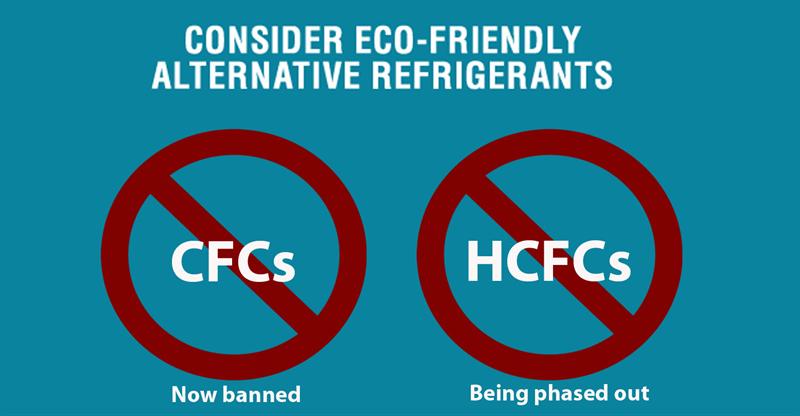Cfc reduction
Courtesy : science.jrank.org
Concerns about the environmental effects of CFCs led to partial restrictions on their use in the early 1980s, when they were prohibited as propellants in aerosol cans. Industrial chemists also began a search for chemical compounds to replace CFCs in refrigerators, air conditioners, manufacturing processes and aerosol generators. Hydrochlorofluorocarbons (HCFCs) and hydrofluorocarbons (HFCs) can replace CFCs for many purposes, and ammonia functions well as a refrigerant in modern cooling units. HCFCs and HFCs are much less durable than CFCs in the lower atmosphere because they contain hydrogen atoms in their molecular structure, are thus less likely to persist and carry their ozone-destroying chlorine and fluorine atoms into the stratosphere.
The United Nations Environment Program (UNEP) convened the Montreal Protocol on Substances that Deplete the Ozone Layer to regulate production, use, and emission of CFCs in 1987. The Montreal Protocol was a comprehensive, international agreement designed to slow and eventually reverse stratospheric ozone depletion. The 1987 protocol called for a 50% reduction of CFC emissions by 2000. Scientific advances prompted amendments to the protocol in 1990 and 1992, the most recent of which required signatories to cease production of the main CFCs by 1995. (Exceptions were allowed for limited essential uses, including medical sprays.) Some major industrial users of CFCs committed to earlier phaseouts, and the European community agreed to an even stricter set of regulations that requires even tighter restrictions on CFCs and other ozone-depleting chemicals. As a result of these regulatory measures, CFC concentrations declined in lower atmosphere, and remained constant in the upper atmosphere in 2000. Computational models predict that the Antarctic ozone hole will disappear by about 2050. Because of the unusually rapid and effective international response to the problem of stratospheric ozone depletion caused by emissions of CFCs, the Montreal Protocol and subsequent agreements on CFCs have been described as an environmental success story.



